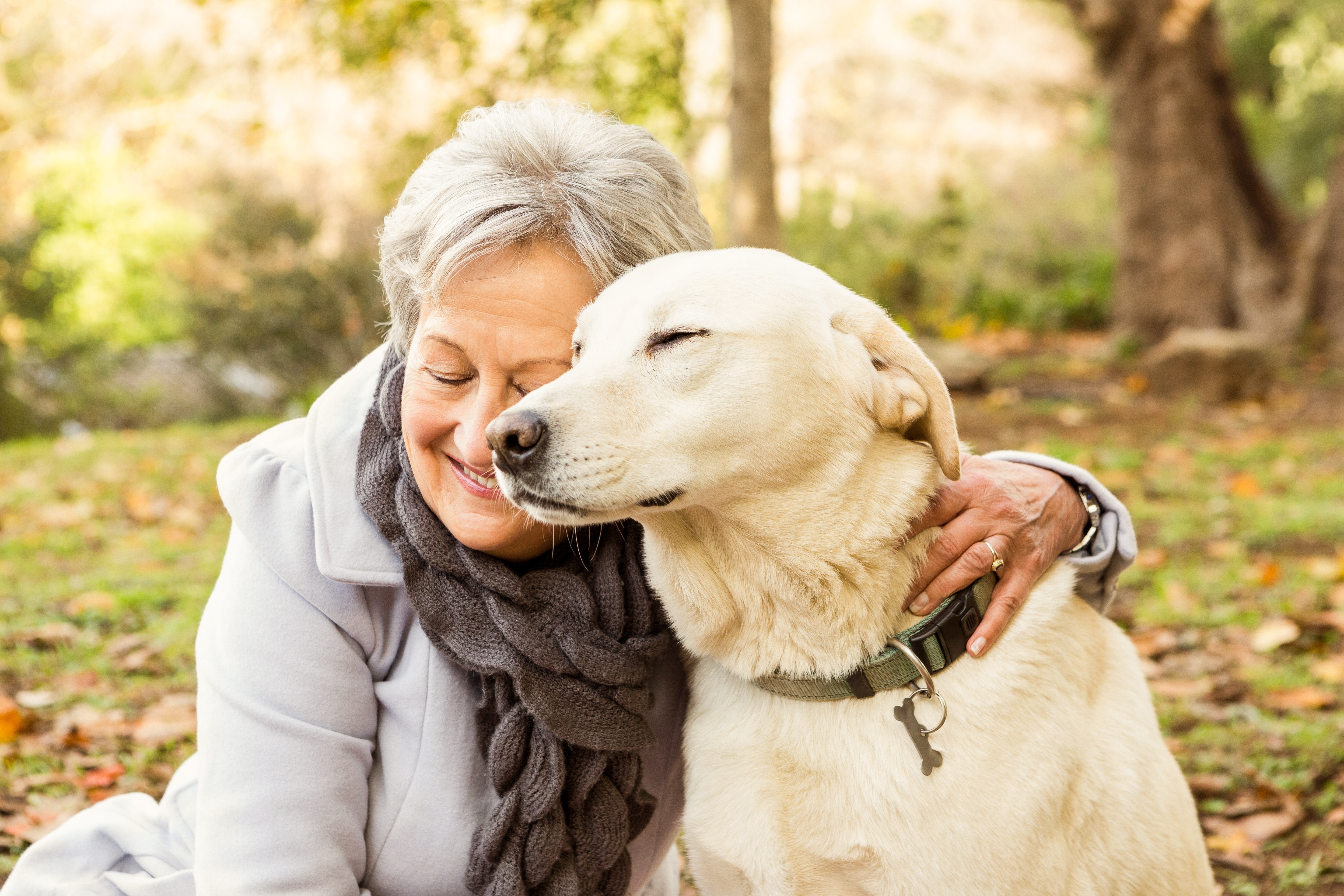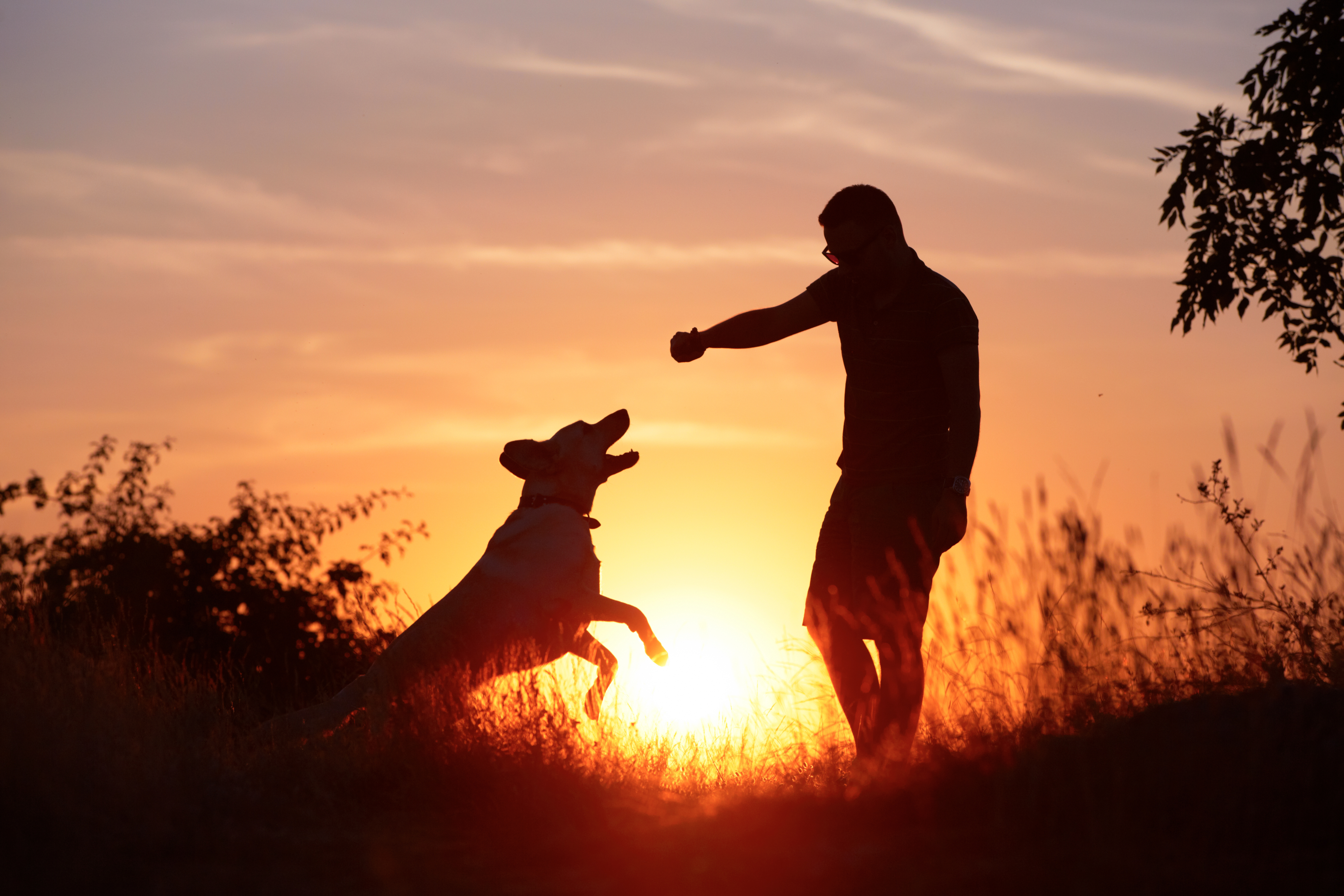Key Takeaways
- Senior dogs require more frequent vet checkups and services
- Senior-appropriate toys and exercise are important
- Create a diet that accounts for health conditions
- Support your senior dog as they adapt to new needs and circumstances
- Obtain pet insurance earlier to ensure better coverage for older pets

When our beloved canine companions reach around ten years of age, they’ve become senior dogs. Senior dogs require extra care and attention as they undergo physiological changes.
From fibrous diets to harnesses that assist with mobility, there are plenty of ways to accommodate your aging dog’s new needs. Let’s go over the key aspects of senior dog care.

Physical Health Care
Regular veterinary check-ups
Since senior dogs are more vulnerable to health issues, it’s important to visit the veterinarian regularly. While adult dogs should get at least one comprehensive vet check-up a year, senior dogs require more frequent and complex veterinary attention.
At least twice a year, a vet can screen geriatric dogs for health issues, spot nutritional deficiencies, and provide you with individualized advice for taking care of your aging dog.
Proper nutrition for senior dogs
As dogs age, they may develop a need for a different diet due to health conditions and physiological changes. Giving your dog proper, balanced nutrition can help offset the negative health effects that come with aging. This may involve switching to a dog food brand that is better suited and easier to digest for senior dogs.
Monitoring weight and dietary needs
Make sure to keep your aging dog within a healthy weight range since obesity can increase a dog’s risks for osteoarthritis and other painful health conditions.
Some health conditions can alter the dietary requirements of a dog. Here are some medical conditions that can impact an aging dog’s recommended diet.
Dental issues: If your dog has dental disease or has lost teeth, they likely won’t be able to ingest kibble. They may benefit from wet canned dog food instead.
Skin issues: Dogs with skin issues and infections may require a diet with more Omega-3 fatty acids.
Diabetes: Diabetes mellitus in dogs usually requires a special diet that is properly timed and contains high fiber and low fat. A vet can help you decide what diet and management will work best for your diabetic dog.
Exercise and mobility support
Senior dogs often have lower energy levels than before, requiring more rest. Prolonged periods of inactivity and lethargy can worsen a dog’s overall wellness. Gentle swimming, leashed walks, and games can help an elderly dog maintain fitness. Walks should be shorter and involve flatter terrain that is easier to paw on. If your dog has a favorite park or area to explore, you might want to drive them to that location to reduce the total steps walked.
If your dog has developed mobility issues, you can help them out by providing essential mobility support and implementing pain management strategies.
Dental care and oral hygiene
Periodontal disease and other oral health issues can exacerbate other medical problems and worsen a dog’s overall well-being. As dogs age, their teeth will wear down and need more dental care. A senior dog may benefit from a dental chew that supports teeth and gum health.
A vet can check your dog’s teeth to assess plaque buildup, periodontal disease, broken or lost teeth, and antioxidant deficiencies that hurt oral health. A vet may recommend a dietary adjustment according to your dog’s teeth status.

Mental and Emotional Well-being
Providing mental stimulation
Mental stimulation helps keep an old dog in optimal shape. Provide your dog with safe routine playtime activities and senior-appropriate toys.
Maintaining social interactions
Even though older dogs tend to withdraw from social activities and have less energy, you should still interact with them. Social interactions and playtime promote:
- Mental stimulation
- Physical health
- Emotional wellness
Addressing anxiety and stress
As dogs grow older, they may become more anxious or susceptible to the effects of stress. Take the time to address any new environmental triggers and stressful situations that might hinder your dog.
Creating a comfortable living environment
A comfortable living space is even more important to senior dogs since an ill-suited environment can exacerbate health problems and overall decline. Here are some tips to consider.
-
- Install non-skid surfaces
-
- Make food and water stations more accessible to reduce joint and back pain
-
- Block the stairs or supervise staircase use to prevent injury
Special Needs and Accommodations
Managing chronic health conditions
Chronic health conditions can significantly decrease a senior dog’s quality of life. Special accommodations such as dietary and environmental modifications can soften the negative effects of chronic health issues in dogs.
Take your senior dog to the veterinarian regularly for health exams. If any chronic health condition arises or worsens, early detection can make a big difference in the prognosis and ease of treatment. A vet can also give you personalized advice on how to best manage your dog’s chronic health conditions.
Providing assistance with mobility issues
Dogs struggling with mobility issues and impairments can benefit greatly from mobility support. Here are common types of mobility support that can assist an aging dog.
- Harness: Reduces the strain on a dog’s limbs when they move around. Particularly useful for dogs with arthritis and hip dysplasia.
- Orthopedic cushions: Special cushions and beds help ensure your dog can rest more comfortably, avoiding a hard floor.
- Knee braces: Offer knee support to dogs with injuries and arthritis. Relieves pain and prevents further injury.
- Wheelchairs: Suitable for dogs with severe mobility issues, disabilities, and paralysis.
Adjusting the home environment for safety and comfort
An aging dog might find it harder to navigate.
- Make your dog’s bed softer to help with pain and inflammation management
- Block the stairs to reduce the chances of accidents
- Install spongy non-skid floor surfaces
Quality of Life Enhancements
1. Incorporate senior-specific toys
Playtime is invaluable for enriching a dog’s life. As a canine companion grows older, they can benefit from toys and activities that are designed with senior dogs in mind.
2. Ensure access to comfortable resting areas
Older dogs will feel more pain and discomfort if forced to sleep on a cold, hard surface. Make sure that your senior dog’s resting area is warm, cozy, and accessible. Their old age can make it harder to climb stairs or move around, so adjust the resting spots as needed.
3. Provide gentle grooming and massages
Grooming and massage sessions can help your dog maintain a comfortable coat while staying clean and safe.
4. Monitor and manage pain
Pain medications and therapeutic strategies can be good options for an aging dog with acute or chronic pain. Consult with a veterinarian if your senior dog is barking more, moving stiffly, or otherwise showing symptoms of a painful condition. While not all root causes for pain can be cured, effective pain management strategies and palliative care can help your dog feel more comfortable.
End-of-Life Care Considerations
Recognizing signs of declining health
While aging dogs can exhibit clear symptoms of cognitive and physical decline, not all signs are obvious. Pet owners should familiarize themselves with signs of declining health in dogs to more quickly handle and treat conditions.
Here are some common signs that a dog’s health is in decline.
- Loss of appetite
- Vomiting
- Diarrhea
- Incontinence
- Weight loss
- Weakness
- Stiff movements
Making decisions about end-of-life care
As a senior dog nears the end of their life, it is necessary for pet owners to make important end-of-life decisions. Your veterinarian can provide resources and guide you through important decisions as your aging dog nears the end of their life. Decisions may involve curative treatment, palliative care, pet hospice care, pain management, and euthanasia.
Palliative care
Palliative pet care prioritizes comfort over curative therapy. Vets may recommend palliative care for dogs who have been diagnosed with life-limiting illnesses or have symptoms that greatly impede normal quality of life.
What type of palliative care will work best depends entirely on your senior dog and your situation. A senior dog may feel better from:
- Temperature therapy
- Acupuncture
- Massage
- Pain medications
- Therapeutic laser (for pain management)
- Physical therapy
Grief support for pet owners
It’s hard processing the loss of a beloved companion. Pet owners who grieve their dogs — you’re not alone. Local and online communities can provide meaningful safe spaces for you to receive pet loss and grief support. An expert therapist can guide you through the grieving process for as long as you need.

Sourcing Pet Insurance for Senior Dogs
Pet insurance provides valuable financial assistance to dog owners. Senior dogs require special veterinary care and medical attention, which can prove particularly expensive in their twilight years.
A visit to the emergency vet can easily cost thousands of dollars, especially if your aging dog requires special imaging and surgery. Some conditions and diagnoses require continuous, costly treatment over time. Pet insurance can mitigate these high upfront pet expenses, allowing you to afford the necessary medical attention and accommodations that your senior dog requires.
It’s harder to obtain pet insurance for a senior dog adopted later in life. Most pet insurance policies exclude pre-existing conditions (i.e. any medical issues diagnosed prior to obtaining coverage). Premiums are also higher for first-time enrollers when the dogs are older.
Researching and comparing pet insurance providers
Finding a suitable pet insurance provider with the best benefits and coverage can make a huge difference in giving your aging pet the care they need. Here are some of the best dog insurance providers.
Evaluating coverage options and exclusions
Pet insurance companies often have age-related restrictions. When comparing policies, make sure to take note of what restrictions and exclusions the insurer has.
Choosing a policy that aligns with your senior dog's needs
If your dog has any unique needs or breed-specific health risks, keep those in mind when shopping for pet insurance plans. For example, large dogs like Alaskan Malamutes are more prone to hip dysplasia, whereas small dogs like Yorkshire Terriers are more susceptible to tracheal collapse. Purebred dogs may also have genetic health conditions that are costly and difficult to manage.
Budgeting for pet insurance premiums
Comprehensive pet insurance costs around $66 a month for dogs. As dogs grow older, pet insurance premiums rise due to the increased health risks. If you’re enrolling your dog in pet insurance for the first time when they are already around ten years of age, pet insurance can be significantly more expensive.
Because of the financial protection offered by pet insurance and the increasing premiums over time depending on a dog’s age, it’s advisable to obtain pet insurance as early as you can in your dog’s life. That way, you can secure more stable and affordable coverage.
For dog owners who find comprehensive coverage premiums too expensive or unsuitable, accident-only pet insurance costs around $17 a month. While this type of policy will not cover treatments for illnesses, it can still be great for aging dogs who are more prone to accidents such as broken bones.
Pet insurance for preventive care
Pet insurers often offer preventive care plans in the form of wellness plans and add-ons. This type of coverage provides quick financial reimbursements for routine pet care services, such as dental cleanings, health exams, and parasite medication. Since older dogs benefit from more frequent visits to the vet, it is cost-effective to procure a wellness plan that can cover these routine pet care expenses.
Reviewing and updating insurance coverage
You might want to broaden your pet insurance coverage as your dog ages. Certain health conditions and illnesses are more likely to affect senior dogs, so it is a good idea to obtain the recommended, expanded coverage before your dog falls ill or is diagnosed with a medical condition.
Also consider adjusting your insurance policy’s coverage limit. Since senior dogs benefit from more frequent vet visits and may require more emergency treatment in case of an accident or illness, you might want to raise your pet insurance coverage limit.
Summary
Senior dogs often have more complex needs, both medical and emotional. They can benefit from:
- Vet visits every few months
- Special diets accounting for health conditions
- Senior-specific toys and enrichment activities
- Environmental accommodations at home
- Pet insurance to cover urgent and routine expenses
Pet owners should know that staying by their dog’s side is often the sweetest comfort for aging dogs. Cherish these quieter, but no less meaningful, moments spent with your well-loved furry friend. Provide them with company and support as they live out their twilight years.




























